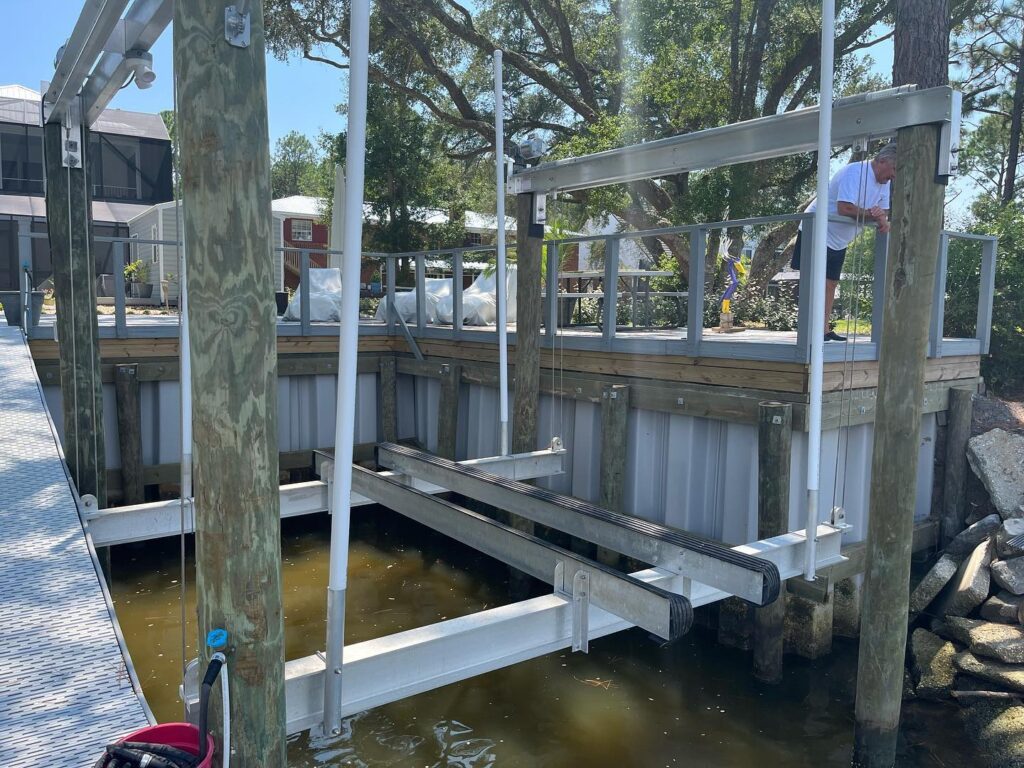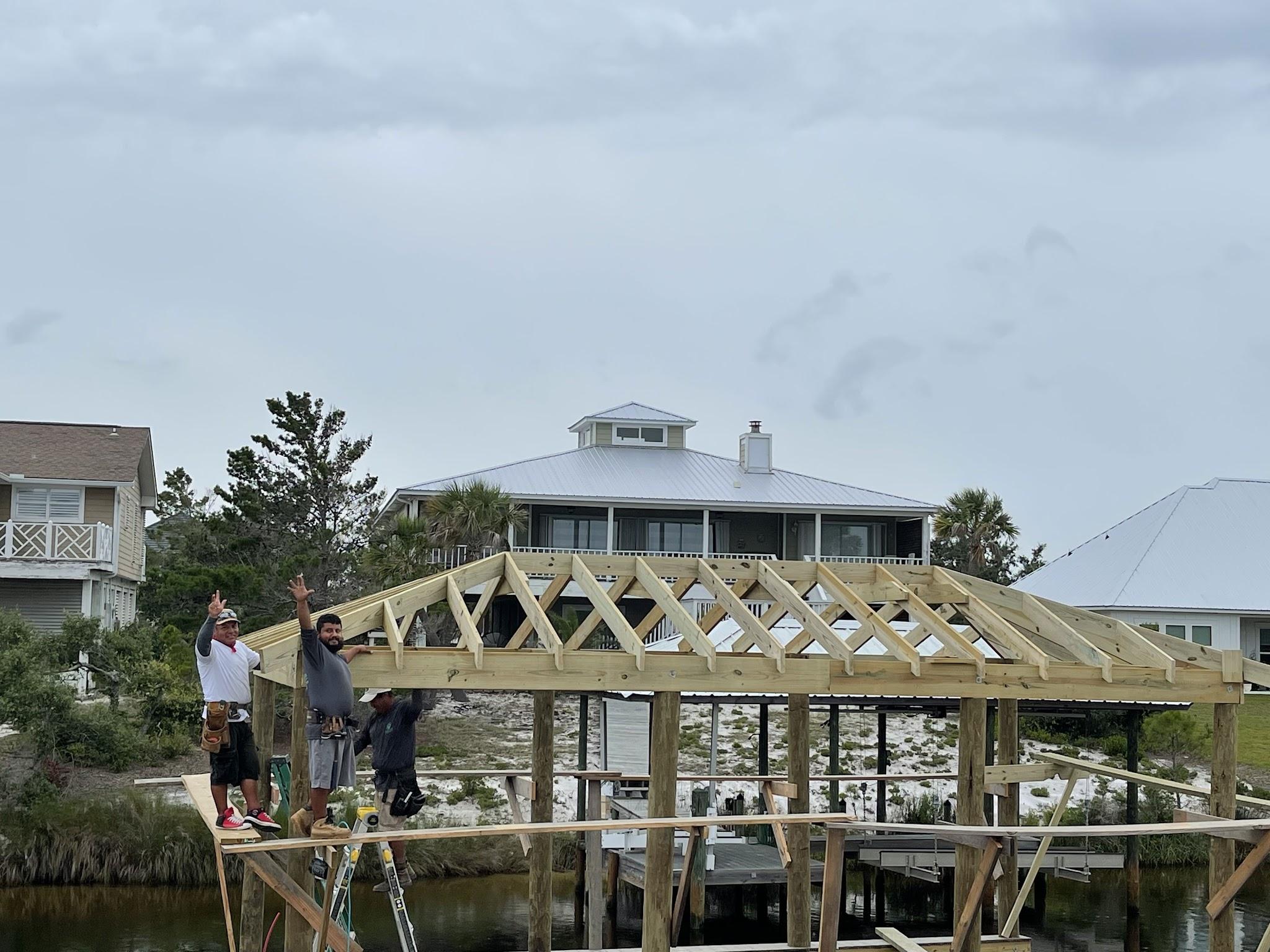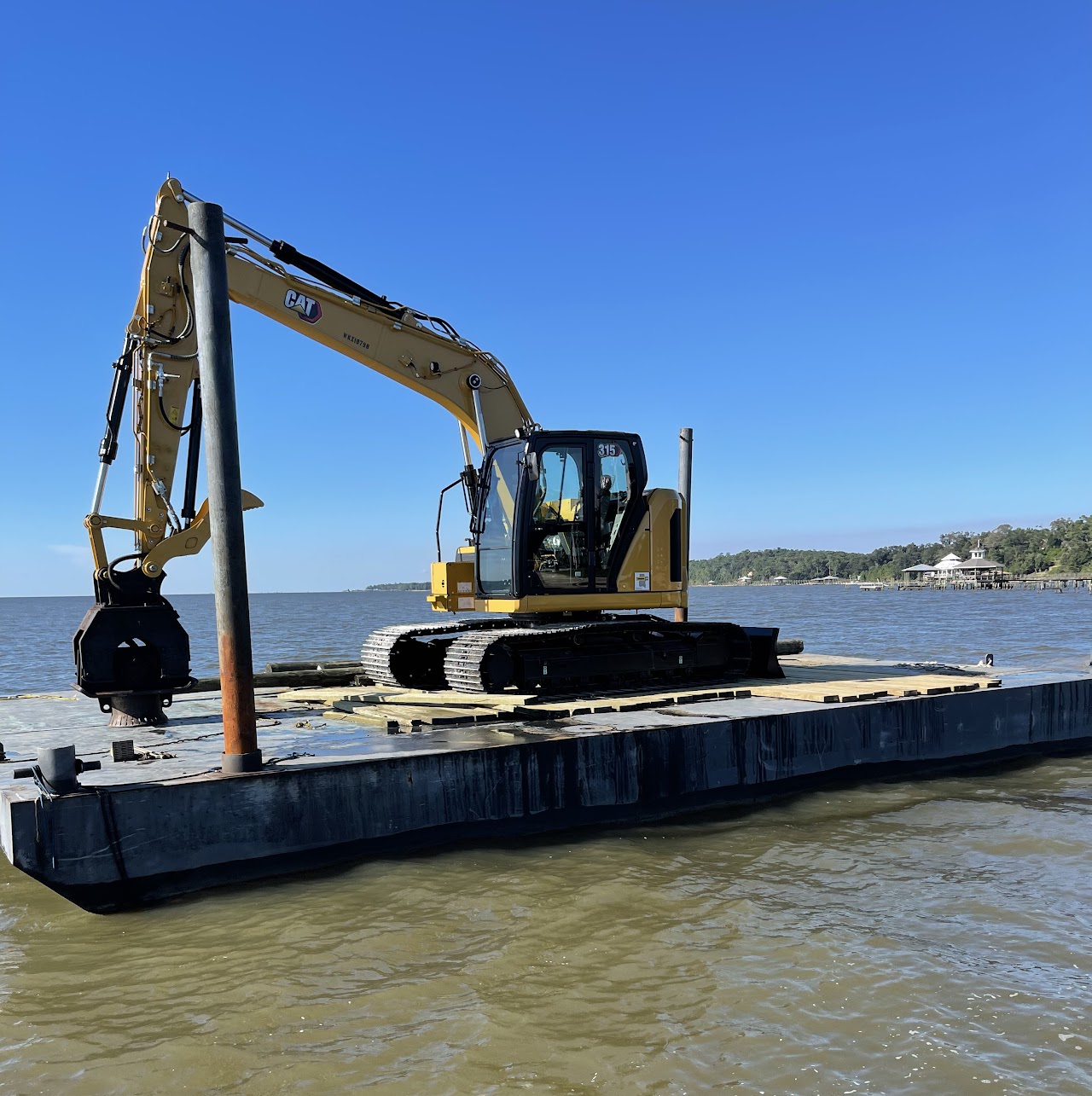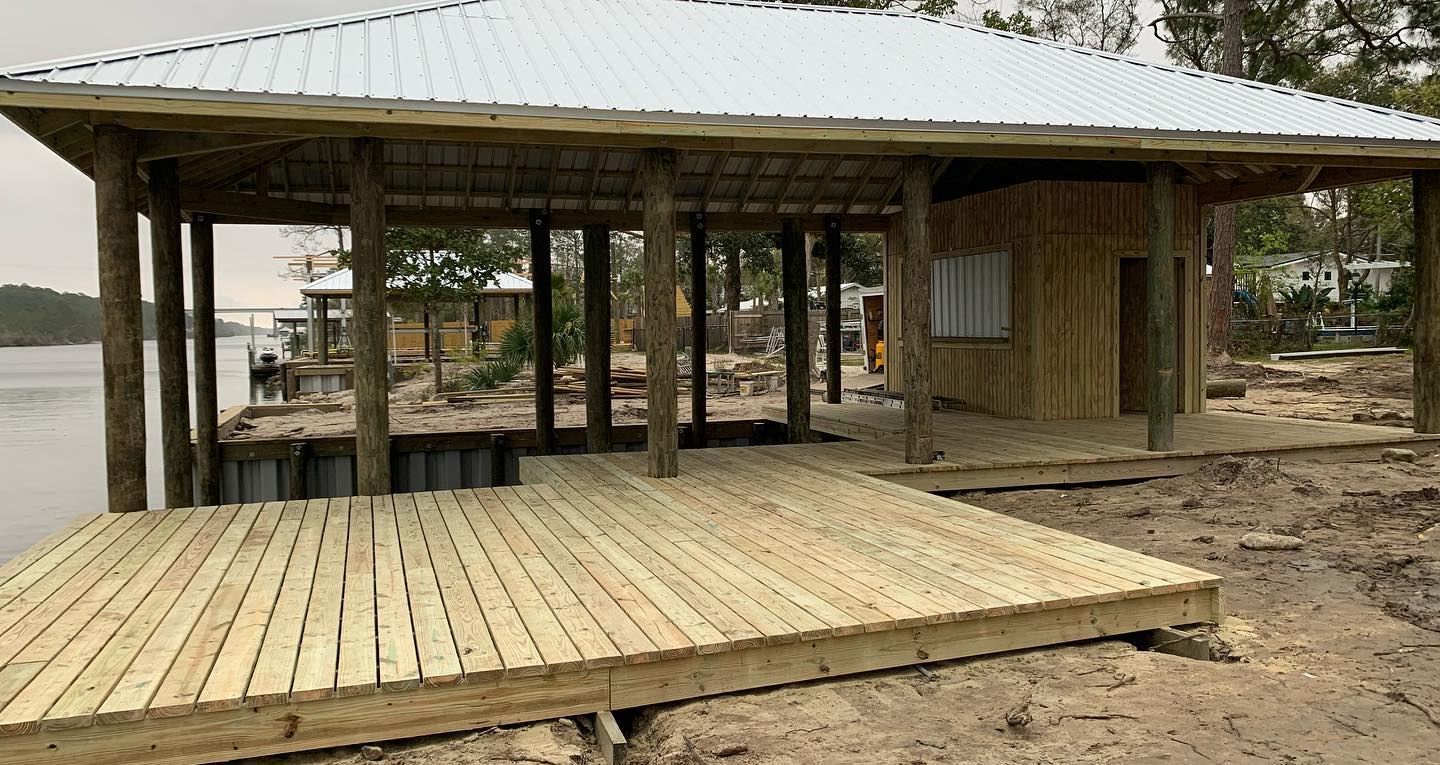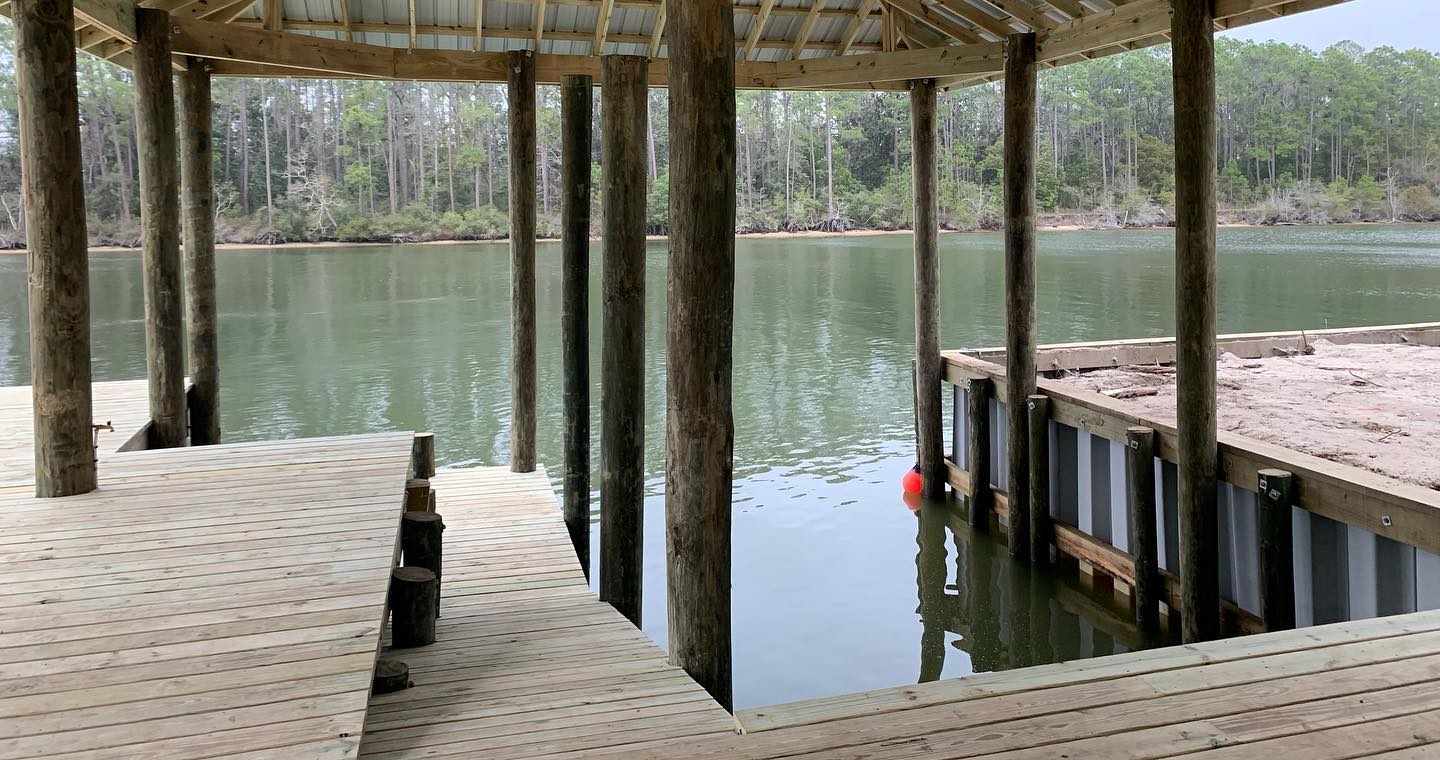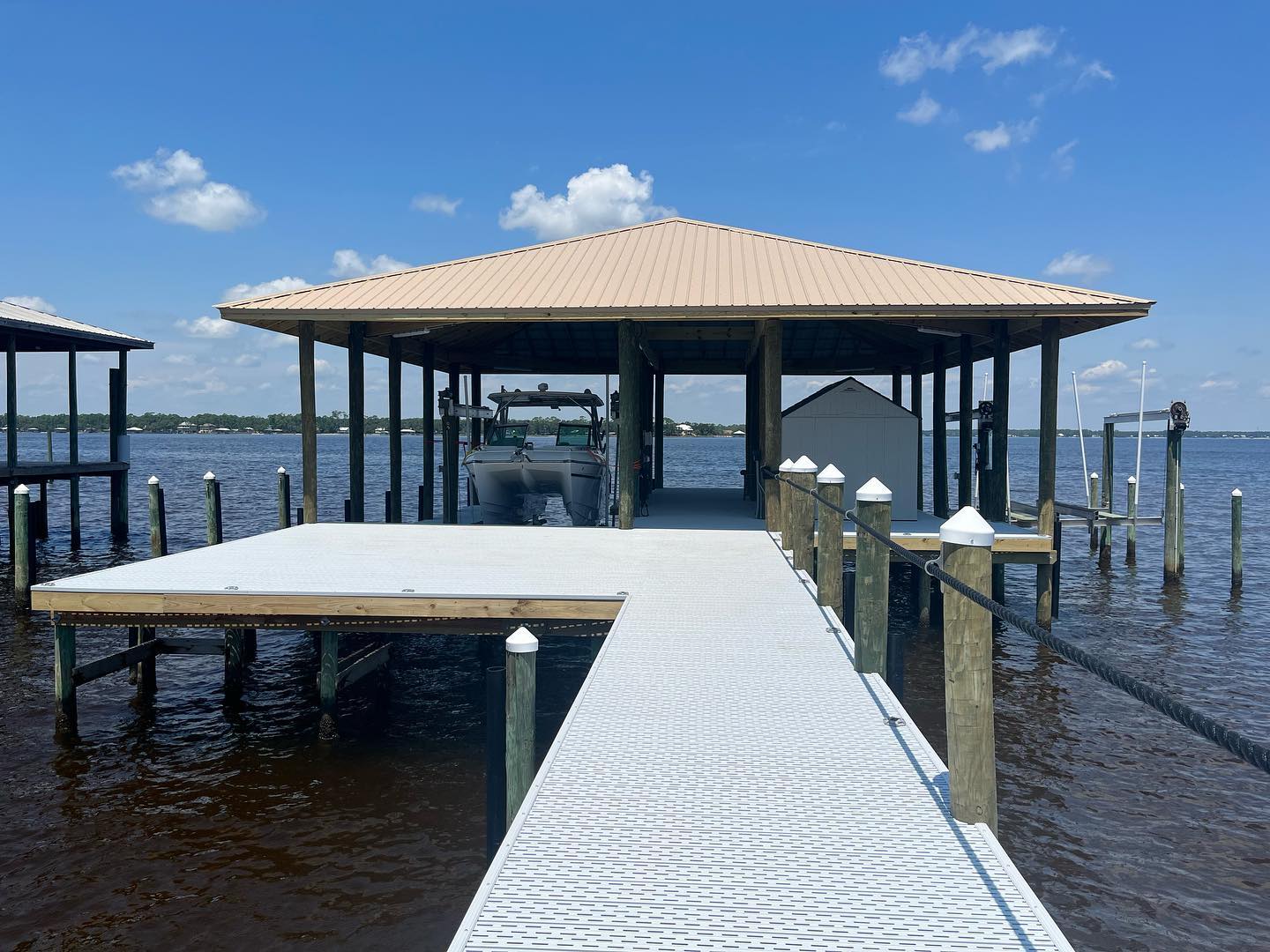Living or working on the Gulf Coast comes with incredible waterfront views and endless recreational opportunities—but it also comes with responsibilities. Seawalls are essential for safeguarding your property from erosion, flooding, and land loss. They maintain shoreline stability and protect your investment, but even the strongest seawalls aren’t immune to wear and tear. Identifying problems early is key to avoiding costly repairs and preserving your waterfront lifestyle.
At GCLM, we know that a seawall isn’t just a structure—it’s a critical line of defense for your property. Recognizing early warning signs of damage allows property owners, marina managers, and developers to act before minor issues become major problems.
Why Seawalls Deteriorate
Seawalls face constant pressure from both sides: waves, tides, and storm surges pound the water-facing side, while soil and groundwater push from behind. This dual force gradually stresses the wall. Saltwater accelerates corrosion, temperature fluctuations cause materials to expand and contract, and biological factors such as barnacles or burrowing creatures can weaken the structure. Without regular inspections and maintenance, these natural forces can slowly compromise a seawall’s integrity.
Early Warning Signs to Watch For
A seawall rarely fails overnight. Instead, damage often begins subtly. Being aware of these early indicators can save you time, money, and headaches:
Cracks in the Wall – Small hairline cracks are common as materials age, but widening or spreading cracks indicate structural movement. Water can seep into these cracks, undermining the base.
Leaning or Bowing – A wall that tilts or bulges outward is under stress, often caused by waterlogged soil or poor drainage behind the structure. Immediate attention is necessary to prevent collapse.
Soil Erosion Behind the Wall – Depressions, pooling water, or sinkholes inland of the wall can signal water infiltration and soil loss, weakening foundations and landscaping.
Displaced Panels or Caps – Missing or shifted sections of the wall allow water to find new paths, accelerating deterioration and threatening overall stability.
Corrosion or Rust – Metal components like anchors, rebar, or fasteners may corrode over time, especially in saltwater environments. Rust spreads quickly, compromising the framework.
Water Intrusion – Standing water behind the wall or seepage through weep holes may indicate drainage problems, creating additional hydrostatic pressure.
Why Acting Early Matters
Ignoring early signs of seawall damage can lead to severe consequences, including land loss, flooding, property damage, and safety hazards. For marinas or commercial waterfronts, failing seawalls can destabilize docks, harm vessels, and create liability risks. Timely intervention often allows for simple repairs like patching cracks, re-compacting soil, or replacing a single panel—much more manageable than full-scale reconstruction.
The Importance of Regular Inspections
Routine inspections by experienced marine construction professionals are the most effective way to extend your seawall’s lifespan. Experts can detect problems using advanced tools like sonar, ground-penetrating radar, or underwater video, identifying hidden issues before they become critical.
Annual inspections are recommended for seawalls over ten years old or in high-traffic areas, while newer structures may require checks every two to three years. After storms, unusually high tides, or nearby construction, extra assessments are wise. Homeowners can also perform basic visual inspections, photographing changes and noting any unusual shifts or erosion.
Choosing the Right Marine Construction Partner
When repairs or replacements are needed, selecting the right contractor is crucial. Look for experience, proper licensing, and a reputation for quality. The best professionals don’t just patch problems—they offer long-term solutions, recommend durable materials, improve drainage, and ensure compliance with local regulations.
A trusted marine construction team will help plan for future maintenance, provide guidance on permitting, and design seawalls that stand strong while blending with the shoreline environment.
Protect Your Property and Peace of Mind
Seawalls are one of the most vital structures protecting your waterfront property. Staying proactive with inspections, maintenance, and timely repairs ensures your shoreline remains stable, safe, and visually appealing.
If it’s been a while since your last seawall check, or you’ve noticed early warning signs, contact a qualified marine construction professional today. With the right expertise, you can safeguard your investment and enjoy your waterfront property with confidence for years to come.

